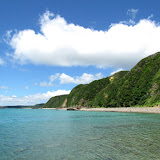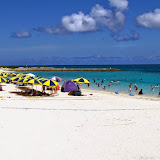 |
| The Zatsungawa River (ザツンガワ / 座津武川) |
GPS
| Latitude | Longitude |
| N 26 49.434 | E 128 14.784 |
*GPS to starting point
The Zatsungawa River, ザツンガワ / 座津武川
The Zatsungawa River of Uka, Kunigami Village is one of many beautiful rivers in the northern part of Okinawa. For the outdoor enthusiast, this offers an escape into the wild and a good taste of nature. See Trekking Data below. There are some moderate to high risk areas so please read the recommended guidelines below.
Trekking Data & Information
River Name. Zatsungawa (ザツンガワ / 座津武川)
River Location. Uka, Kunigami Village (宇嘉, 国頭村)
Trek Starting Point. GPS N26 49.434 E128 14.784
Recommended Emergency Rally Point (For Emergency Vehicles). GPS N26 49.468 E128 14.632
1st Stopping Point. GPS N26 49.386 E128 14.906 (
image,
video)
2nd Stopping Point. GPS N26 49.384 E128 14.955 (
image,
video)
3rd Stopping Point. GPS N26 49.249 E128 15.037 (
image,
video)
Turn-Around Point. GPS N26 49.246 E128 15.130 (
image,
video)
Trek Time from Starting Point to Turn-Around Point. Approx 3 hrs
Total Time. 7 hrs
Video Overview.
Map It! Okinawa Video Short, Zatsungawa River.
Tip. Start your trek near the
water station. Look for a
metallic ladder taking you down to the river. Climb down and cross to the other side. You will see a trail and it will take you to a launch point on your trek.
Note. At the time of this river trek, the turn-around-point could not be surpassed due to the semi steep outer-terrain and the depth of water. Under warmer conditions this may be feasible. It is not recommended to submerge into water above the waist during the colder months. Please read below. The post will be updated after future attempts have been completed.
Recommended Guidelines (MUST READ!)
1. VERY IMPORTANT! This particular river trek is recommended only for those who have fairly good physical agility, coordination skills, and upper body strength. Negotiating steep inclines may be required. Recommended only for young adults and above. Though most of the trek is manageable, it does have some moderate to high risk areas.
2. VERY IMPORTANT! Plan on getting wet up to your knees. It is sometimes safer to walk in the river, rather than hopping and balancing yourself on the rocks just to keep dry. On a normal good weather day, the river current at most areas is not enough to push you off balance. Though this rule may seem trivial, it is a very important thing to remember. The biggest risk to this trek is falling and slipping on the rocks.
3. VERY IMPORTANT! In the colder months you do not want to get wet above your waist. You will run the risk of hypothermia if you continue further. Your upper body will not provide you enough heat for you to keep warm. Ideally, try to keep the water below the knees.
4. VERY IMPORTANT! It is recommended that you do not trek during the rain or after a recent rain shower. The ideal time is on an average good weather day (no rain or drizzle). During good weather the rocks above the river will be dry. This is important for grip. There are some high risk areas that will require good surface grip (feet, hands, and body) to get from point A to point B. This rule is unique to this river. Surface grip will be required to negotiate difficult terrain.
5. DO NOT WEAR TENNIS SHOES!!! Tennis shoes offer no traction and will slip on these rocks. Wear something that has hard soles and has great traction on these kinds of surfaces. If you do not have hard soles you will 'feel' every step you take. And since you will be getting wet, thick heavy boots will only get heavier when soaked. You should wear something that is lighter, has good traction, but still gives you flexibility of movement.
6. GUIDE STICK. Having a guide stick is recommended. Sometimes it will be safer to skirt the terrain just to avoid danger areas. If at some point it seems impossible to continue, look for red or yellow tape markers around the trees. Trekkers have left guide marks to assist with negotiating terrain (though on this particular river, it has not always been helpful). You will need a guide stick to probe these areas for snakes and to knock down spider webs. When you are negotiating boulders however, you will have to set your guide stick aside to free your hands for climbing. This is very important. When it comes to negotiating boulders and rocky terrain, your hands will be your best assets. This is for safety.
7. Never go alone. Have a buddy. For this particular river trek, the 'ideal' number is to have at least three (3) hiking buddies, but optimally try to have more than 3 due to the level of difficulty. If one gets hurt, then you have the option of leaving at least one with the injured while the other(s) go retrieve help. Cell phone reception is very difficult, if not non-existent in these areas. If you are a US Service Member, your nearest US Military Facility will be the Okuma Recreational Facility. It is recommended that everyone should have the number to this location should an emergency arise.
8. Tell someone (or few others), where you will be river trekking to and leave them at a minimum: the GPS coordinate of the starting point, the name of the river, and this website URL (see Trek Data Information above).
9. Wear a light long-sleeve top (depending on the weather) for protection against the elements and bugs. Whether you trek on the river or skirt the landscape, you will hit spider web after spider web (summer or winter).
10. Wear a hat or beanie to keep warm and to protect yourself against the elements and bugs. You may run into many spider webs along the way (Do a 'spider check' with your buddy every now and then). A beanie does offer some bit of head protection in the event of a fall.
11. VERY IMPORTANT! Bring some light hiking gloves for grip and protection. You may be required to grab roots, tree limbs, trees, rocks, dirt, etc. in order to negotiate terrain.
12. DO NOT WEAR SHORTS! Find something that you don't mind getting wet in and that offers protection against the elements. There 'will' be a few times you will be on your knees or on your rear end as you negotiate some of the terrain. Also you need to protect your legs from critters and abrasions. You may want to bring some shorts if you want to take a dip in the water. There are some areas that are over 7 feet deep. Swimming not recommend in the colder months.
13. VERY IMPORTANT! Apply the '3-Points of Contact Rule' when going over difficult terrain.
14. VERY IMPORTANT! Maintain a low center of gravity when going over difficult terrain.
15. If something looks unsafe, then avoid. Find another way to negotiate the terrain or SIMPLY, DON'T DO IT. Don't try to be brave. You do not have to travel far to enjoy the natural scenery.
16. Give yourself plenty of time AND TAKE YOUR TIME. NO NEED TO RUSH. But remember you have to add time to get back (before dark!). Recommend you leave early morning time frame. The rule of thumb is travel far enough so that have the same amount of time to get back. However, add an extra hour as a buffer on your return trip. (For example, if you travel 3 hours, ensure you have 4 hours of sunlight left to get back). Note. From experience, it is more dangerous on your return trip. There are two reasons; on your return trip your are more fatigued and therefore less alert; and second, gravity and descending elevation. It is usually a lot easier to climb up then it is to climb down.
17. Bring a light backpack for food, water, toilet paper, flash light, survival kit, first aid kit, light rain coat, warming layers, etc. and water proof them as needed.
18. USE THE BATHROOM BEFORE YOU GO! Making natural deposits of certain kind in the wild may not be fun for some.
19. You will get dirty. Bring a towel, extra socks, extra pair of shoes, shirt, pants, and warming layers (Can leave in the car).
20. Tuck in your shoe laces to prevent tripping.
21. Protect & secure items such as your wallet and cell phone from moisture and from getting soaked.
22. Don't try to be brave. Respect your limits and respect nature.
23. You do not have to go all the way to any of the stopping points or to the Turn-Around Point. You don't have to go far to enjoy some of the beauty along the river. Never feel pressured to continue on if you are fatigued or if it becomes too hazardous.
Directions/Parking. Take Highway 58 into Kunigami Village (to the town of Uka, 宇嘉). You will have to navigate by Landmarks annotated in the map. The turn-off point is just a few hundred meters south of the
Uka Tunnel (click
here for Japanese writing above the tunnel). Additionally, the Uka Tunnel is a newer tunnel. The older tunnel is fenced off to the side. It is the old Zatsun Tunnel. If you wish to park near the
water station, please do not block the entrance gate as maintenance crews utilize this station.

















